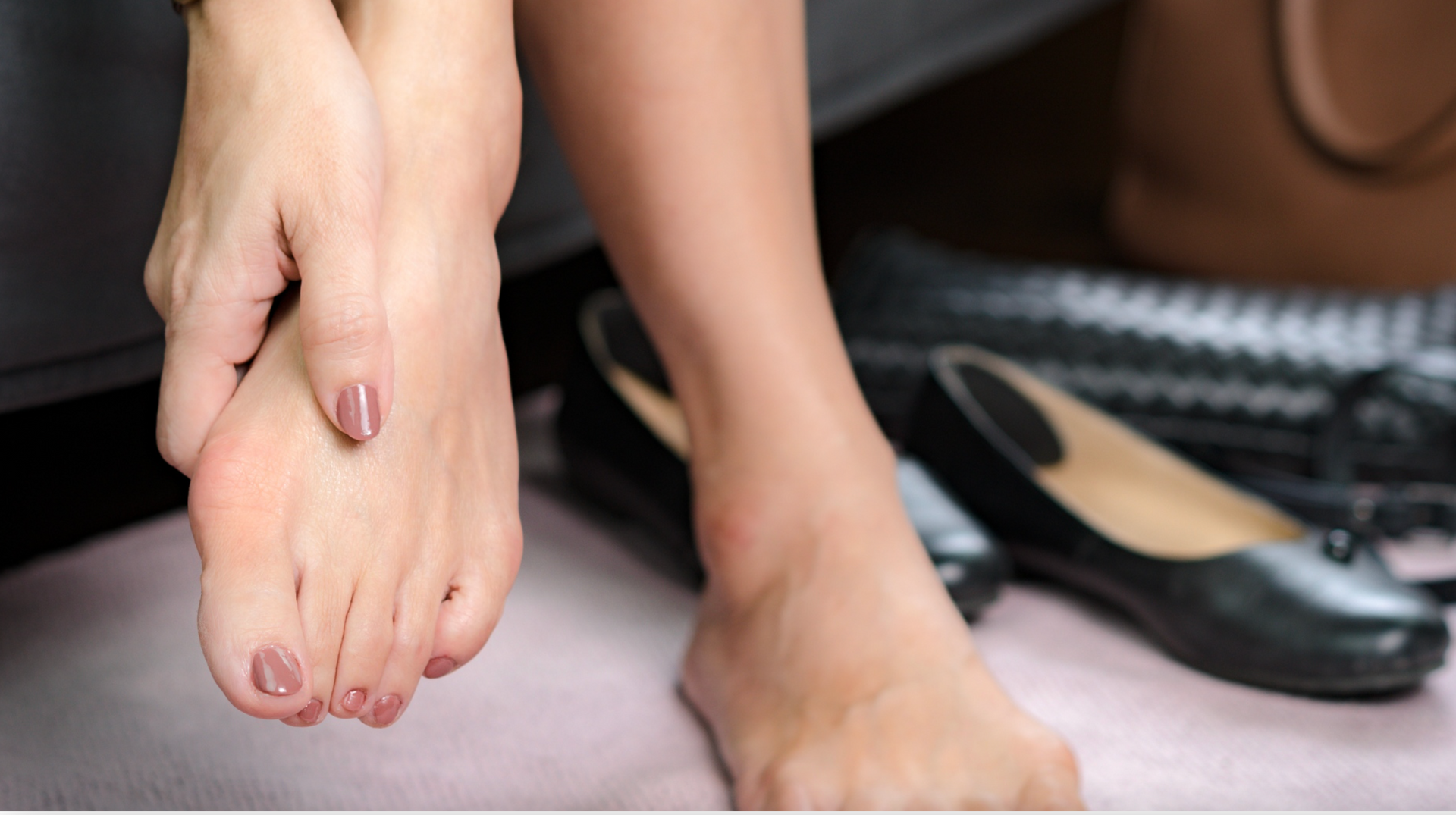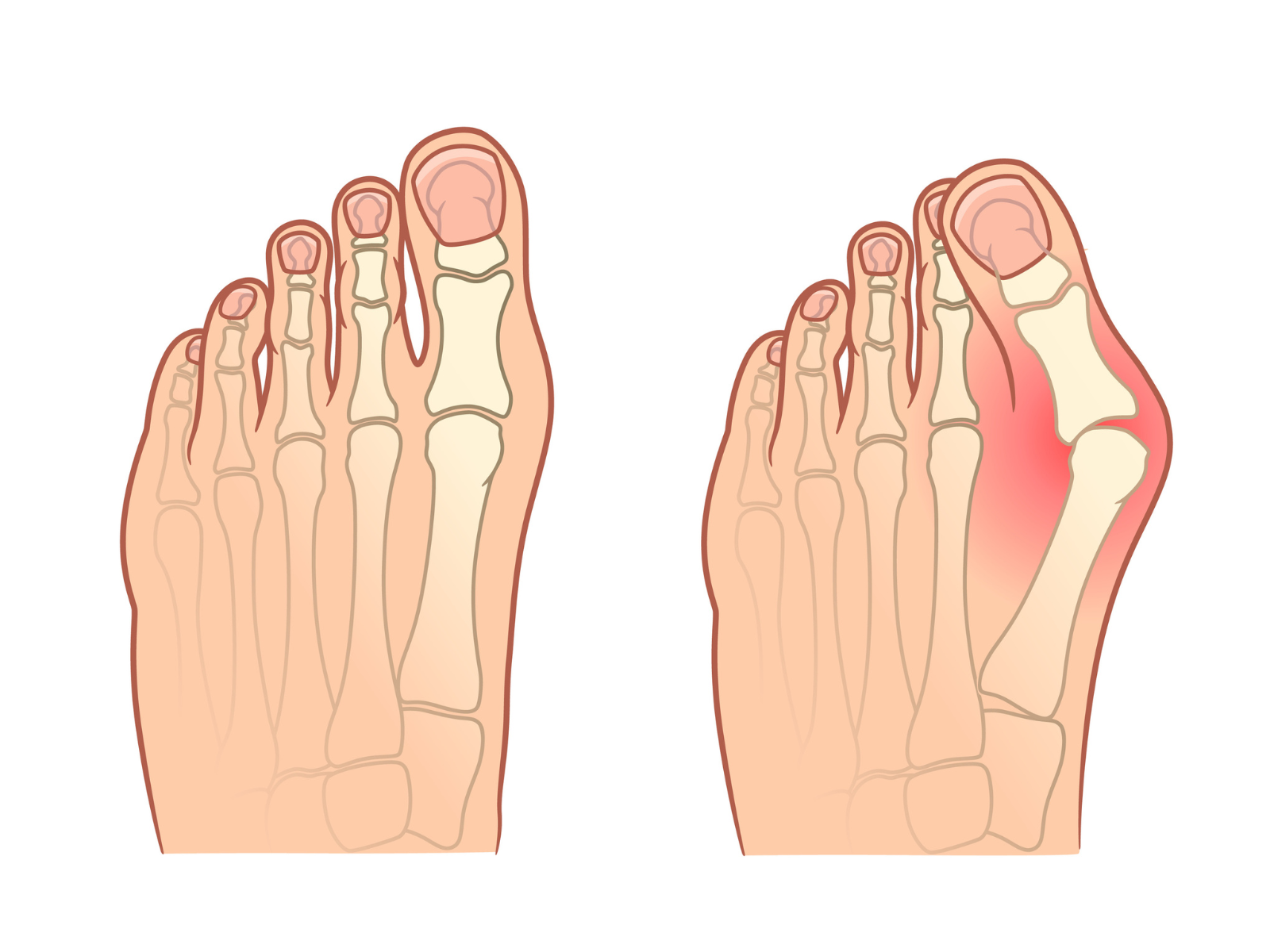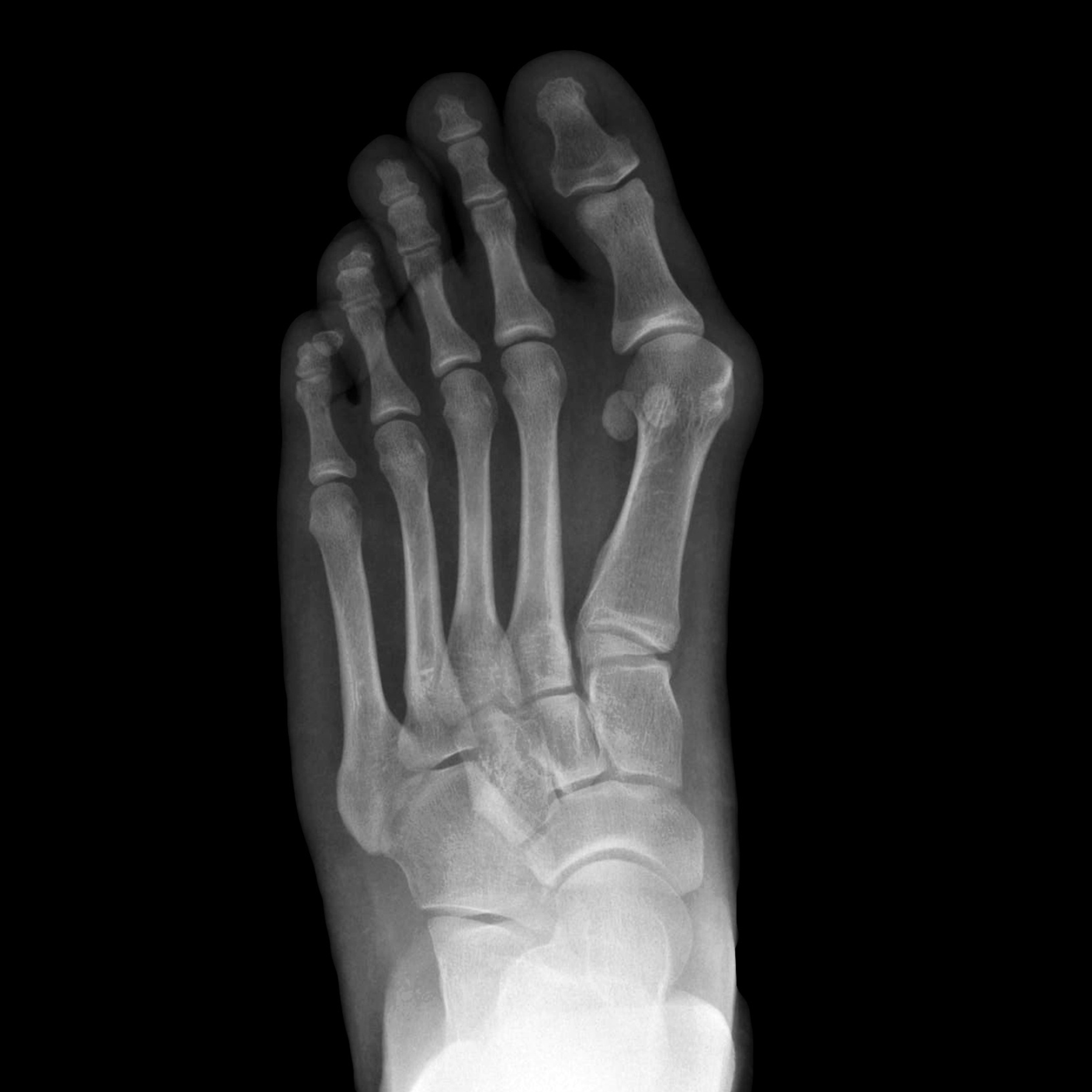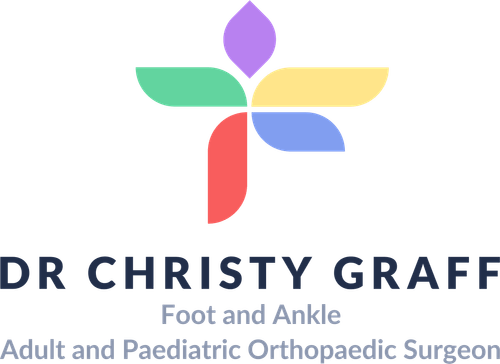Bunions
What are Bunions?
Bunions (also known as hallux valgus) are a common foot deformity characterised by a bony bump at the base of the big toe. This deformity can cause the big toe to lean towards the other toes, leading to pain, swelling, rubbing, and reduced mobility. Bunions often develop gradually and can significantly impact daily activities and footwear choices.

Impact of Bunions on Anatomy and Health
Bunions can significantly impact both the structure of your foot and your overall health:
- Anatomy:
- The normal alignment of the big toe shifts, affecting the balance and mechanics of the foot.
- Changes in weight distribution can lead to additional stress on the ball of the foot, resulting in conditions like metatarsalgia (pain in the ball of the foot).
- The big toe can cause crowding and lesser toe deformities
- Over time, the deformity can progress, potentially causing joint stiffness or arthritis in the big toe.
- Health:
- Persistent pain and discomfort, especially while walking or wearing shoes.
- Corns and calluses may form due to friction between toes or shoes.
- Severe bunions can impair mobility, reducing physical activity and overall quality of life.
- Occasionally, untreated bunions can lead to chronic joint inflammation and further deformities.
Causes and Risk Factors for Bunions
Certain factors may increase the risk of developing bunions, such as:
- Genetics: A family history of bunions or foot deformities can predispose an individual to this condition.
- Footwear Choices: Wearing high heels or shoes that are too tight can exacerbate or contribute to bunion formation.
- Arthritis: Rheumatoid arthritis and other inflammatory joint conditions can increase the risk.
- Biomechanical Issues: Abnormal walking patterns or uneven weight distribution across the feet.
Symptoms of Bunions
Bunions typically present with the following symptoms:
- A visible protrusion at the base of the big toe
- Pain and tenderness around the area
- Corns or calluses developing where the toes rub together or overlapping
- Problems with lesser toes and pain on walking

Prevention of Bunions
While not all bunions can be prevented, certain strategies can reduce your risk:
- Wear Proper Footwear: To minimise stress on the toes, choose shoes with a wide toe box, low heels, and good arch support.
- Maintain a Healthy Weight: Keeping a healthy body weight reduces pressure on the feet and helps prevent joint misalignment.
- Strengthen Foot Muscles: Perform toe stretches and foot rolls to enhance flexibility and muscle strength.
- Use Orthotics: Custom shoe inserts can help improve foot alignment and distribute weight evenly.
- Avoid High Heels: Limit high-heeled or narrow-toed shoes that push the toes out of alignment.
Types of Bunions
Bunions can be classified into different types based on their location and underlying causes:
- Hallux Valgus (Traditional Bunion): The most common type, forming at the base of the big toe. It occurs when the big toe deviates toward the second toe, causing a bony bump on the side of the foot.
- Bunionette (Tailor’s Bunion): A smaller bunion that develops at the base of the little toe. It is often caused by similar factors as traditional bunions, including ill-fitting footwear.
- Adolescent Bunion: Seen in teenagers, especially girls, and often linked to inherited foot structure. These bunions are typically less painful but can worsen over time.
- Arthritic Bunion: Associated with conditions like rheumatoid arthritis or gout, leading to joint swelling and deformity.
- Congenital Bunion: Present at birth, caused by foot structure or alignment abnormalities.
Stages of Bunions
Bunions progress in stages, each with varying levels of severity:
- Mild: Minimal deformity with a slight protrusion at the base of the big toe.
- Moderate: Increased misalignment of the big toe, leading to noticeable swelling and pain.
- Severe: Significant deformity, with the big toe crossing over or under the adjacent toes.
- Complications: Untreated bunions can lead to secondary conditions such as arthritis, corns, calluses, and nerve irritation.
Diagnosis of Bunions
Dr Graff will examine your foot and organise imaging, such as:
- X-rays: To evaluate the bone structure and determine the severity.
- MRI Scans:
Very rarely, but they may be used to view soft tissue and other surrounding structures.

Management and Treatment of Bunions
Management and treatment of bunions aim to relieve pain and correct the deformity when possible. Options include:
- Padding or taping: These can cushion the area and help reduce pain- they do not correct the bunion
- Proper Footwear: Choosing wider shoes and avoiding high heels can reduce pressure on the bunion and stop pain from rubbing
- Orthotic Devices: Custom-made inserts may help to redistribute pressure and reduce pain.
- Medication: Over-the-counter pain relievers can help manage discomfort.
- Surgery: For severe cases, surgical intervention may be necessary to realign the toe and remove the bunion.
Bunions are a prevalent foot disorder that can cause significant discomfort and limit daily activities. Surgical intervention is an option if conservative measures do not provide adequate relief.
What if Bunions Are Untreated?
Untreated bunions can lead to worsening symptoms and secondary complications, including:
- Increased Pain: The discomfort may become constant, making walking or standing difficult.
- Progressive Deformity: The big toe may continue to deviate, crossing over or under other toes.
- Development of Secondary Conditions: Corns, calluses, and blisters from friction between toes or with footwear. Joint stiffness or arthritis in the big toe.
- Reduced Mobility: Severe deformities can impair walking and limit physical activity.
- Chronic Inflammation: Persistent bursa irritation (a fluid-filled sac near the joint) can lead to bursitis.
- Foot Imbalance: Misalignment of the toes can alter the biomechanics of the foot, causing pain in the arch, heel, or ball of the foot.
- Mental Health Impacts: Chronic pain and reduced mobility can lead to emotional distress and lowered quality of life.
Individuals can avoid complications and maintain foot health by addressing bunions early and adopting preventive measures.
